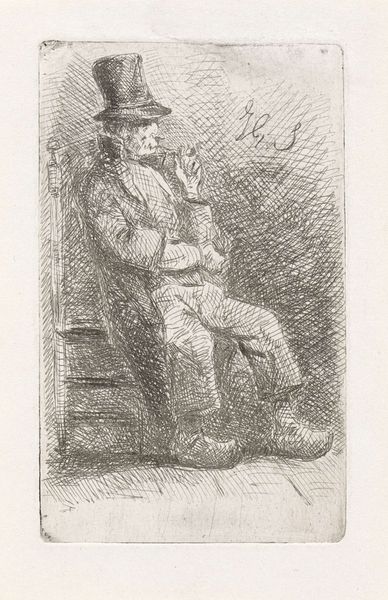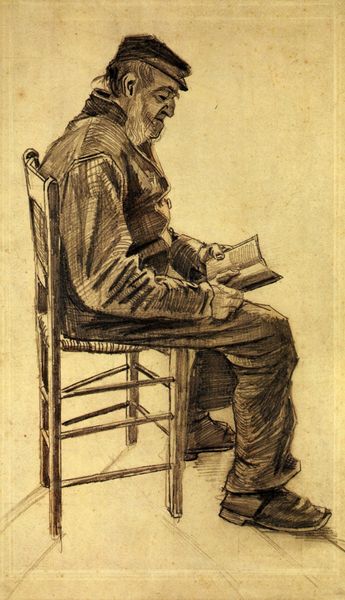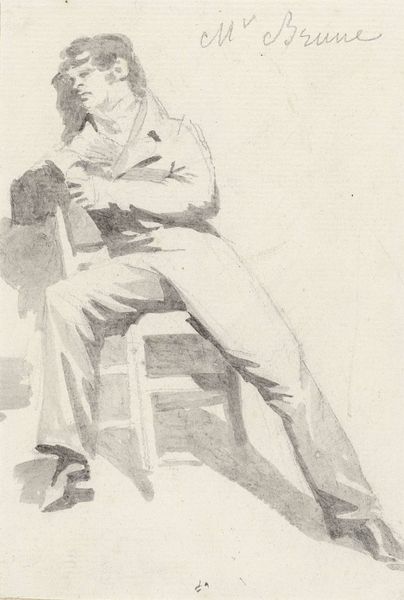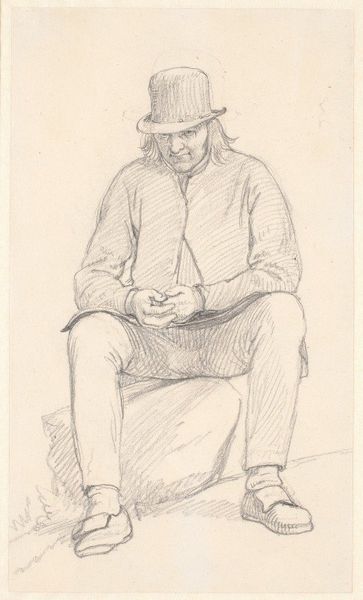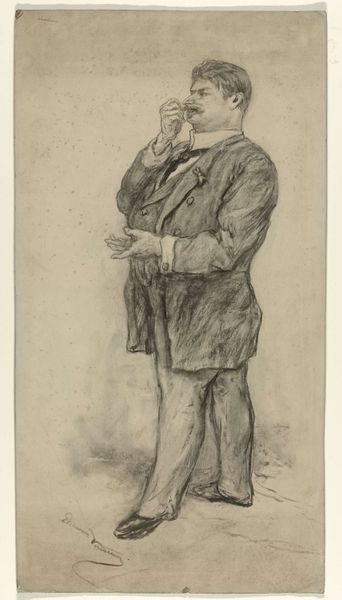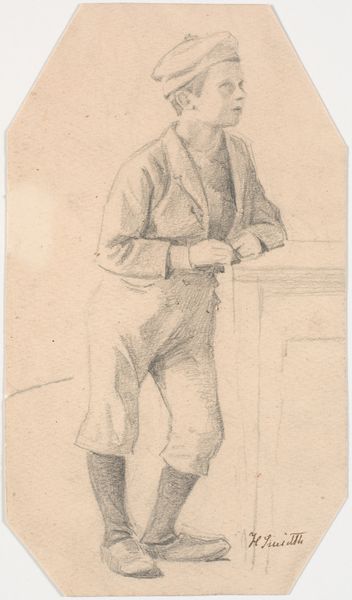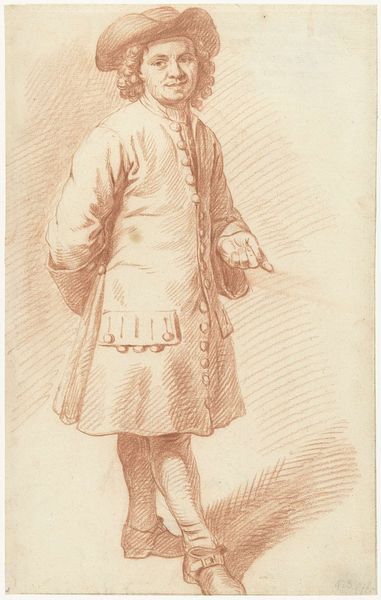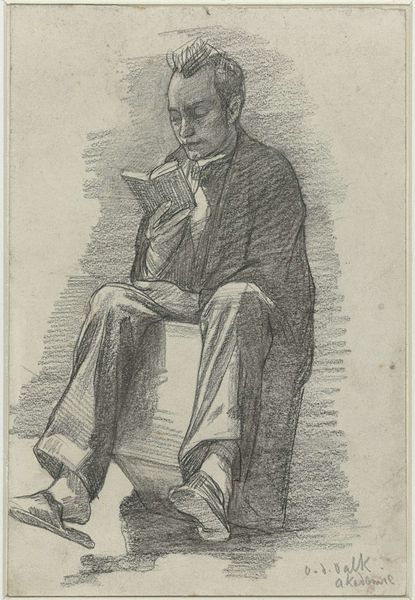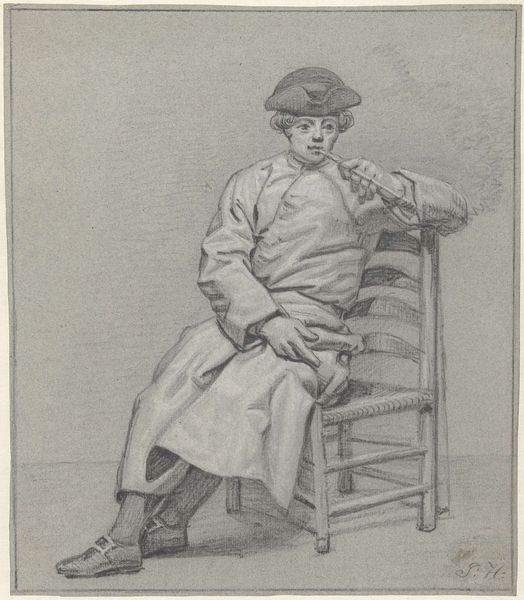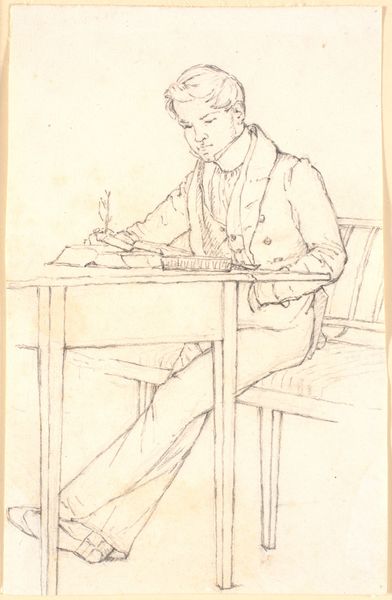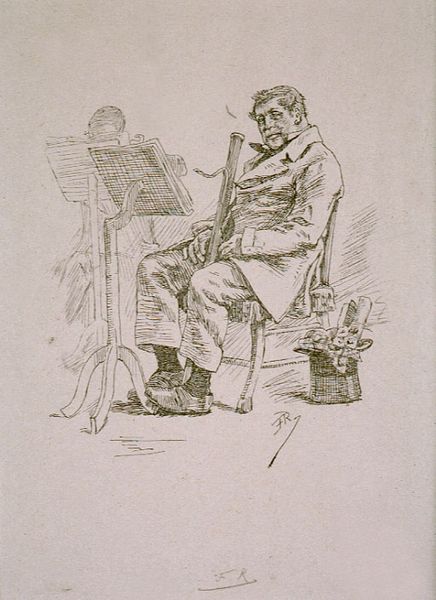
drawing, pencil
#
portrait
#
drawing
#
pencil sketch
#
etching
#
figuration
#
pencil drawing
#
pencil
#
academic-art
#
realism
Dimensions: height 242 mm, width 151 mm
Copyright: Rijks Museum: Open Domain
Curator: Here we have Johannes Petrus van Horstok's "Portret van Hendrik Tavenier," a pencil drawing created sometime between 1755 and 1825. Editor: My first thought is one of introspection. He seems very absorbed in his work, there's a sense of deep concentration about him. And I love the limited palette, that warm reddish-brown. Curator: Absolutely. And the artist, van Horstok, gives us an intimate glimpse into the artistic community. This work embodies the rising trend of artists representing other artists—fostering the idea of a creative persona for the consumption of the middle-class public. Tavenier was, indeed, also an artist and printmaker, thus this drawing not only captures his physical likeness, but elevates artistic endeavor as worthy subject matter. Editor: The image seems to be conveying the tools of creation almost as emblems. His pen, the tablet he writes on--they all speak to this idea of learnedness and a connection to historical traditions. We should also note the subject's fashion and hair. Does this speak to any philosophical notions? Curator: Indeed! The meticulously rendered attire signifies his social standing but also subtly nods toward Enlightenment ideals of intellectualism and refinement that permeated artistic circles. The pose seems calculated, the very model of bourgeois respectability combined with artistic inclination. Editor: There's a real air of studiousness about him, which, of course, aligns with that era's focus on learning and reason. What is interesting to me is the simple choice of medium. The simplicity and immediacy of the pencil contribute to a sense of authenticity. A raw image is thus transmitted. Curator: A key aspect in these sorts of informal commissioned pieces was an illusion of access. Middle-class art patrons were invited into the workshops of these figures. With simple lines, a sitter became accessible to a large audience of consumers. Editor: Well, it has certainly given me a richer appreciation for this era. Curator: And hopefully, revealed a bit of the cultural performance embedded within these ostensibly simple portrait sketches!
Comments
No comments
Be the first to comment and join the conversation on the ultimate creative platform.
